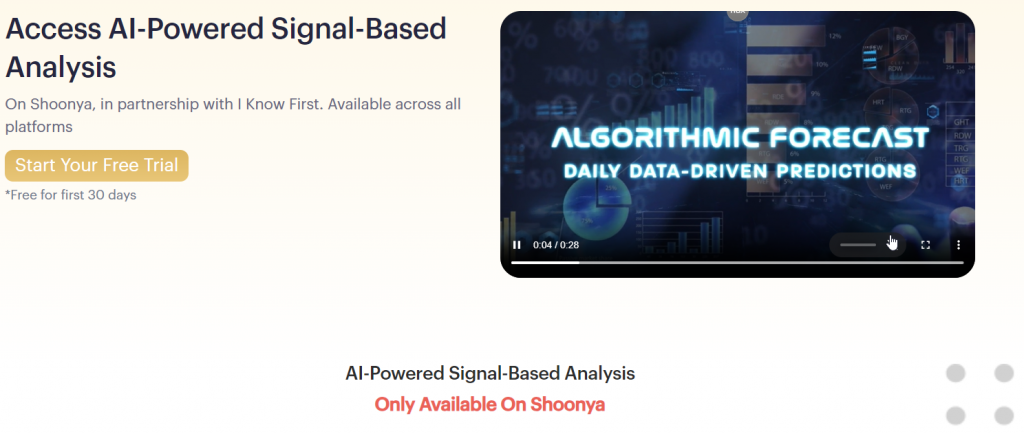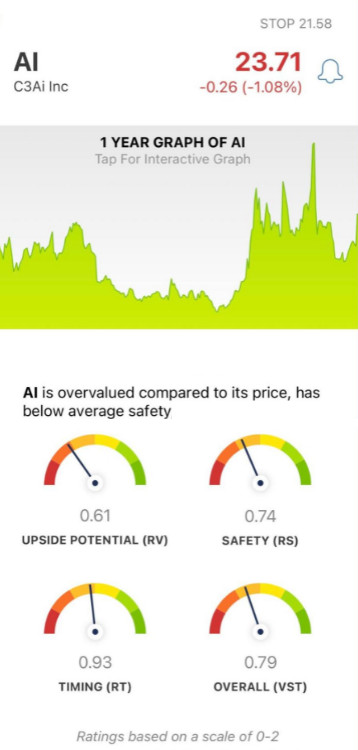20 Good Facts For Deciding On Free Ai Tool For Stock Market India Sites
20 Good Facts For Deciding On Free Ai Tool For Stock Market India Sites
Blog Article
Top 10 Tips When Looking At Ai And Machine Learning Models On Ai Trading Platforms
Assessing the AI and machine learning (ML) models used by stock prediction and trading platforms is essential in order to ensure that they are precise, reliable, and actionable insights. Models that are not well-designed or overhyped could result in incorrect predictions and financial losses. We have compiled our top 10 suggestions on how to assess AI/ML platforms.
1. Understanding the model's purpose and the way to approach
Clarity of objective: Decide the purpose of this model: Decide if it is to be used for trading on the short or long term, investment, risk analysis, sentiment analysis, etc.
Algorithm disclosure: Find out if the platform discloses which algorithms it is using (e.g. neural networks and reinforcement learning).
Customization. Find out whether the model can be adapted to be modified according to your trading strategy, or your risk tolerance.
2. Examine the performance of models using measures
Accuracy - Examine the model's prediction accuracy. But don't rely exclusively on this measurement. It can be misleading regarding financial markets.
Accuracy and recall: Check the accuracy of the model to detect real positives, e.g. correctly predicted price changes.
Risk-adjusted gains: Determine whether the assumptions of the model lead to profitable transactions, after taking into account risk.
3. Make sure you test the model using Backtesting
Performance historical: Test the model with historical data to check how it performs in previous market conditions.
Out-of sample testing: Test the model with the data it was not trained with to prevent overfitting.
Scenario Analysis: Examine the model's performance under different market conditions.
4. Be sure to check for any overfitting
Overfitting signs: Look for overfitted models. They are the models that do extremely well on training data and poorly on unobserved data.
Regularization: Determine if the platform is using regularization methods like L1/L2 or dropouts to avoid excessive fitting.
Cross-validation is essential and the platform must utilize cross-validation to assess the generalizability of the model.
5. Evaluation Feature Engineering
Look for features that are relevant.
Choose features carefully: The platform should only include statistically significant data and not irrelevant or redundant ones.
Dynamic feature updates: See whether the model adjusts over time to new features or to changing market conditions.
6. Evaluate Model Explainability
Interpretability: Make sure the model provides clear explanations of its predictions (e.g. SHAP value, the importance of particular features).
Black-box models: Beware of applications that utilize excessively complicated models (e.g., deep neural networks) without explainability tools.
User-friendly insights: Ensure that the platform provides actionable information that are presented in a manner that traders will understand.
7. Examine the ability to adapt your model
Market changes: Check whether your model is able to adjust to market shifts (e.g. new rules, economic shifts, or black-swan events).
Check to see if your system is updating its model regularly with the latest information. This will increase the performance.
Feedback loops: Ensure that the platform is incorporating feedback from users or real-world outcomes to refine the model.
8. Examine for Bias in the elections
Data bias: Make sure that the data on training are representative of the market and free of bias (e.g. excessive representation in certain segments or time frames).
Model bias: Make sure that the platform actively monitors model biases and reduces them.
Fairness: Check that the model does favor or disfavor specific types of stocks, trading styles or even specific segments.
9. Evaluation of Computational Efficiency
Speed: Determine whether the model is able to make predictions in real time, or with minimal delay. This is especially important for high-frequency traders.
Scalability Test the platform's capacity to handle large data sets and multiple users without performance loss.
Resource usage: Check if the model has been optimized for the use of computational resources efficiently (e.g. use of GPU/TPU).
10. Transparency in Review and Accountability
Model documentation. You should have an extensive documentation of the model's architecture.
Third-party auditors: Check to determine if the model has undergone an independent audit or validation by a third-party.
Make sure there are systems in place to identify errors and failures of models.
Bonus Tips
Case studies and user reviews User reviews and case studies: Study feedback from users and case studies to assess the model's performance in real life.
Trial period: You can use a free trial or demo to evaluate the model's predictions as well as its useability.
Customer Support: Make sure that the platform offers robust technical support or model-related support.
Follow these tips to assess AI and ML stock prediction models to ensure that they are accurate and clear, and that they are aligned with trading goals. Take a look at the top copyright financial advisor info for website examples including best stock analysis app, ai copyright trading bot, chart ai trading, best ai trading software, free ai trading bot, ai trade, best ai trading software, ai invest, copyright ai trading bot, best ai trading software and more.
Top 10 Ways To Assess The Feasibility And Trial Of Ai Stock Trading Platforms
It is crucial to assess the flexibility and trial capabilities of AI-driven trading and stock prediction systems before you decide to sign up for a service. Here are the top ten tips to consider these aspects.
1. Enjoy a Free Trial
Tips Check to see the platform's free trial available for you to try out the features.
Why: A free trial allows you to evaluate the platform with no financial risk.
2. The Trial Period as well as its Limitations
TIP: Check the duration of the trial as well as any limitations (e.g., restricted features, limited data access).
The reason: Once you understand the limitations of the trial and limitations, you can decide if the trial is an accurate evaluation.
3. No-Credit-Card Trials
Tip: Look for trials that don't need credit card details upfront.
The reason is that it reduces the possibility of unanticipated charges and makes the decision to leave simpler.
4. Flexible Subscription Plans
Tip: Evaluate if the platform offers flexible subscription plans (e.g. monthly, quarterly, annual) with distinct pricing and tiers.
Flexible Plans enable you to select a commitment level which suits your requirements.
5. Customizable Features
TIP: Ensure that the platform you're using permits customization for alerts, risk settings, and trading strategies.
The importance of customization is that it allows the platform's functionality to be tailored to your individual trading goals and preferences.
6. It is easy to cancel a reservation
Tip - Check out the ease it takes to upgrade or cancel an existing subscription.
The reason is that a simple cancellation process lets you to avoid being bound to a service that does not work for you.
7. Money-Back Guarantee
Tip: Choose platforms that provide a money back guarantee within a certain period.
Why? This is an additional security precaution in the event that your platform doesn't live up to your expectations.
8. All Features Available During Trial
Check that you can access all the features in the trial version, not only a limited version.
Why? Testing the complete functionality can help you make an informed decision.
9. Customer Support during the Trial
Tips: Assess the level of assistance provided by the business throughout the trial.
Why is it important to have dependable support so you can resolve issues and get the most out of your trial.
10. Post-Trial Feedback Mechanism
Check whether the platform asks for feedback from its users following the test to improve the quality of its service.
Why: A platform that is based on user feedback is more likely to evolve and satisfy user requirements.
Bonus Tip Tips for Scalability Options
Ensure that the platform you choose to use can grow with your trading needs. This means it should provide higher-level options or features as your business needs increase.
If you take your time evaluating the options for trial and flexibility You can make an informed decision about whether an AI trade prediction and stock trading platform is the best choice for your requirements prior to making a financial commitment. Have a look at the recommended best ai trading app info for website tips including ai investment platform, ai stock trading app, best ai trading app, ai for trading, ai for stock trading, best ai stock trading bot free, canadian ai stocks, copyright advisor, stock analysis app, trading with ai and more.